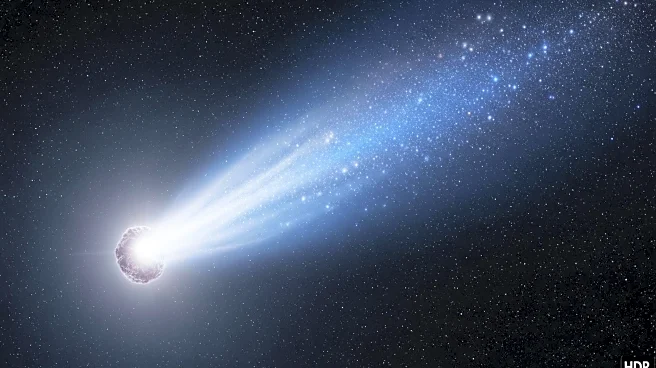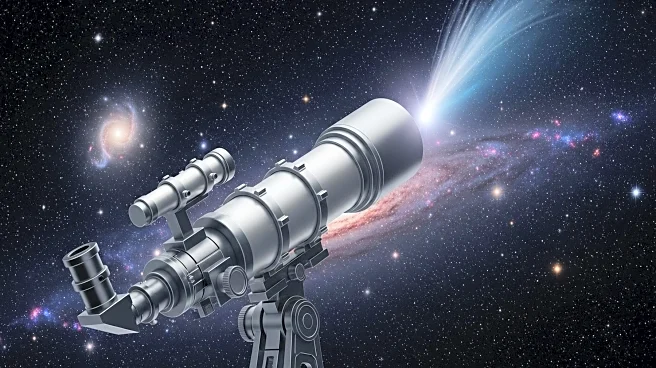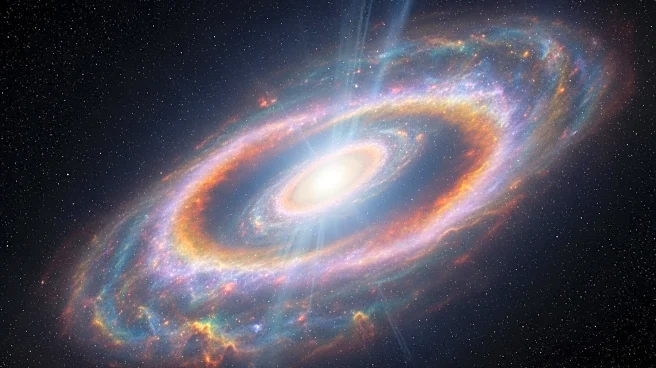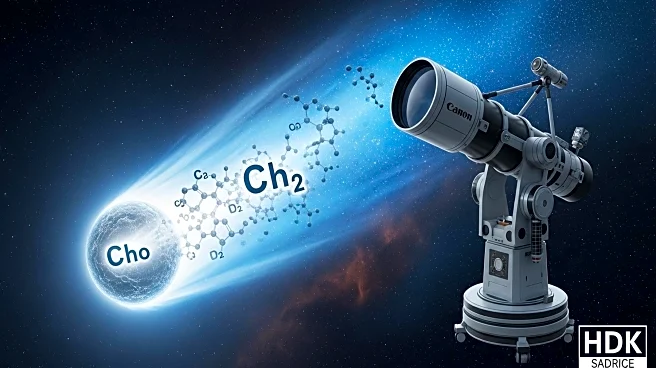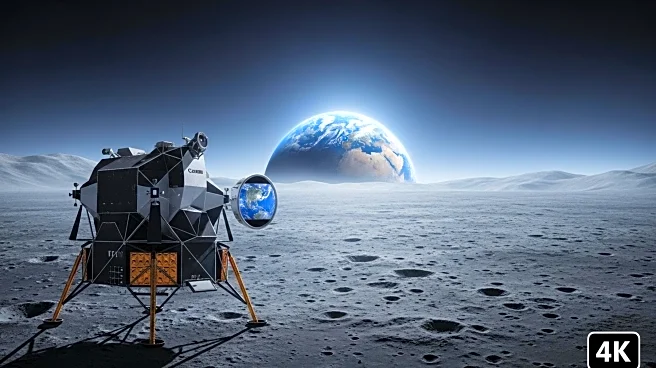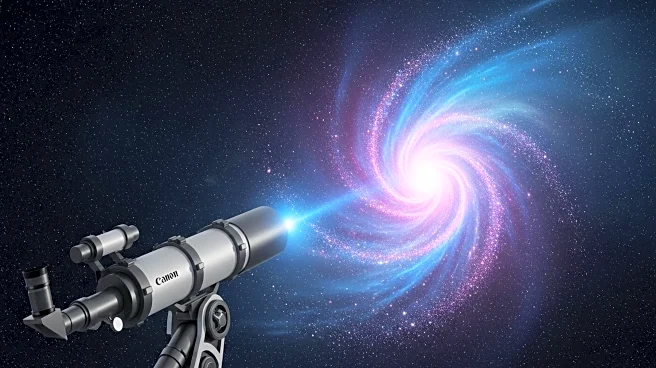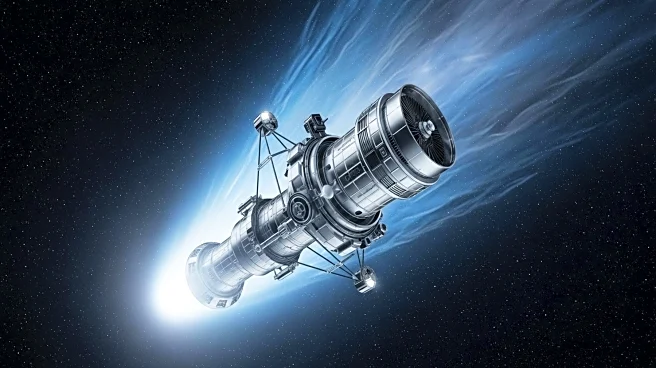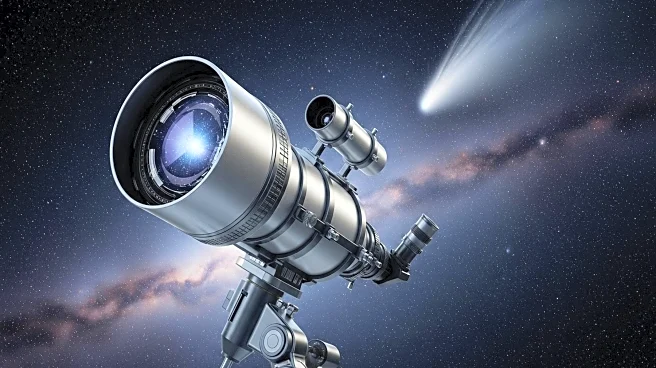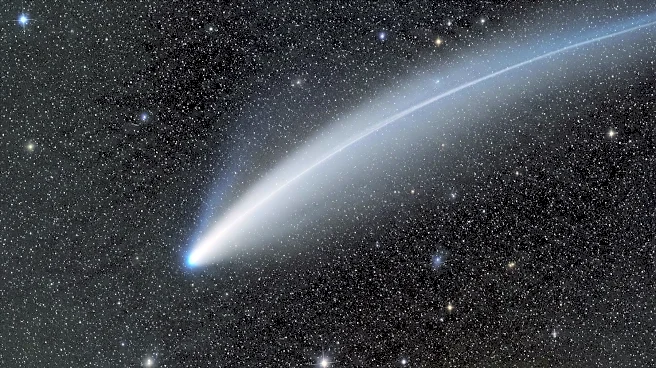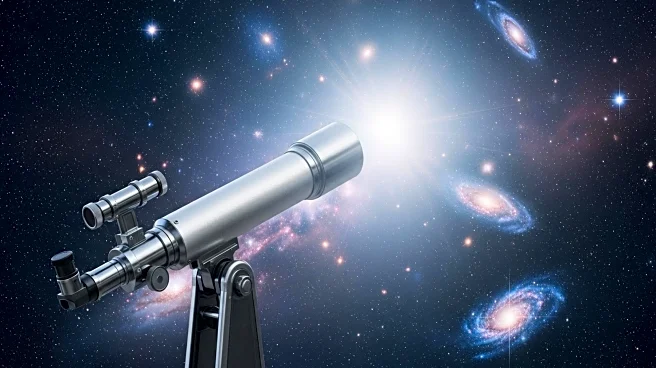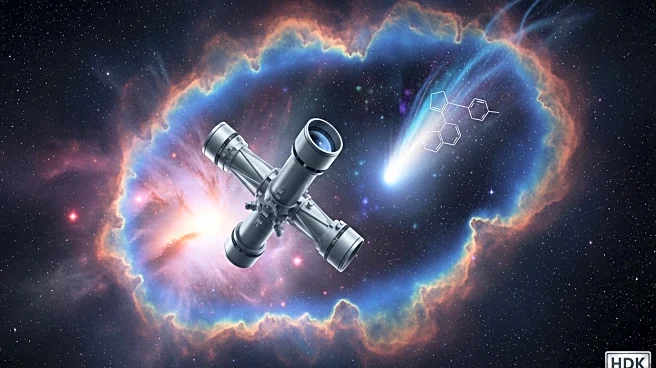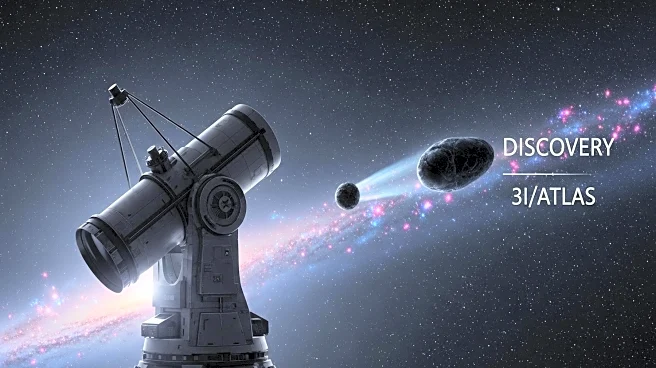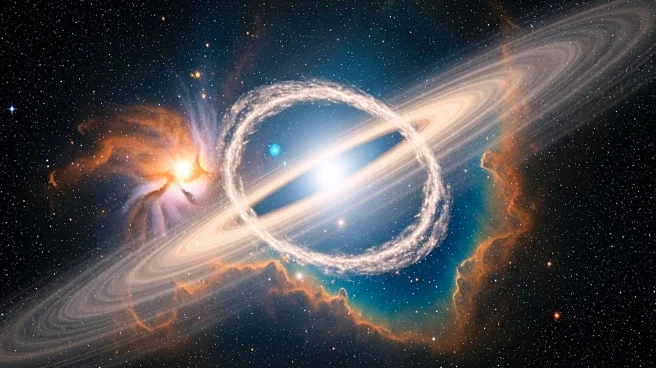What is the story about?
What's Happening?
NASA's James Webb Space Telescope has observed the interstellar comet 3I/ATLAS, revealing a high carbon-dioxide-to-water ratio in its coma. Discovered on July 1, 2025, by the ATLAS survey telescope in Chile, 3I/ATLAS is the third confirmed interstellar object. Its hyperbolic trajectory indicates it originated outside our solar system. The comet is moving at over 130,000 mph, the fastest recorded in our solar system, and will soon exit, limiting study time. Researchers are using spectrograph data to analyze its chemical composition, which includes carbon dioxide, water, and other gases.
Why It's Important?
The findings from 3I/ATLAS provide valuable insights into the composition and formation of interstellar objects. The high carbon dioxide levels suggest the comet may have formed within the carbon dioxide ice line of its protoplanetary disk, offering clues about its origin. This research enhances understanding of interstellar chemistry and the conditions in distant solar systems. It could influence future space exploration missions and the search for extraterrestrial life.
What's Next?
Observations of 3I/ATLAS will continue until September, after which it will be too close to the Sun for meaningful study. Researchers will analyze the data to refine models of interstellar object formation and behavior. The study may prompt further missions to explore similar objects and expand knowledge of the universe.
Beyond the Headlines
The study of interstellar objects like 3I/ATLAS raises questions about the potential for life beyond Earth and the ethical considerations of space exploration. Understanding the chemical makeup of these objects could inform the search for habitable environments in other solar systems.
AI Generated Content
Do you find this article useful?
